Lab-grown diamonds, lab created diamonds or man-made diamonds are cultured or engineered diamonds created in a laboratory setting with the help of advanced technological processes identical to the conditions in which diamonds form naturally. These comprise carbon atom structures and therefore have the same optical and chemical properties as a naturally-occurring diamond. The price of synthetic diamonds is usually lower than natural diamonds
Lab-grown diamonds come in a variety of colors. The cultured ones are available in different colors absent in naturally-occurring diamonds. The colored diamonds are priced lower than the ones available in natural shades.
Difference Between Lab-Grown Diamonds and Diamond Stimulants
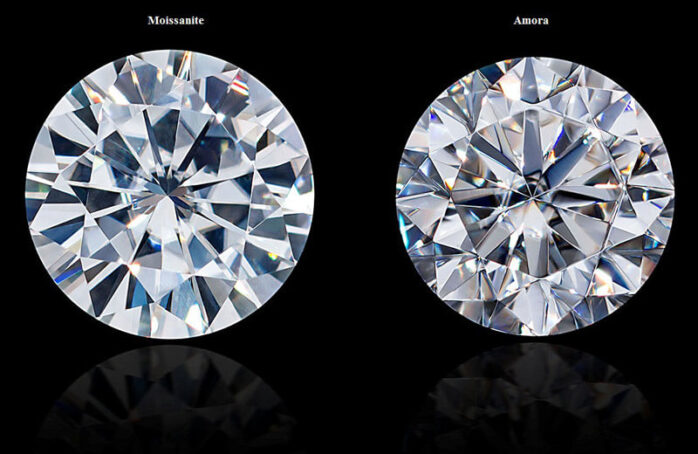
A wide variety of diamonds are available on the market, and there are a host of comparable stones available. The industry is massive, and at times the lines between diamond rings and synthetic diamond rings can often blur. Even gemologists new to the field find it hard to distinguish between lab-grown diamonds and diamond stimulants. To make your search simple, we will outline some of the differences.
Diamond stimulants are known as imitation diamonds. These are stones that often look like natural diamonds. Some popular diamond stimulants are moissanite and cubic zirconia. It is hard to find naturally-occurring cubic zirconia, and therefore the ones used in jewelry making are man-made. Moissanite was discovered by Henri Moissan, a Nobel-winning scientist, who thought he had found diamonds at a meteor site, but the stone was silicon carbide. These stimulants have different physical and chemical properties than naturals. Lab-grown diamonds and natural diamonds have thermal conductivity properties diverse from cubic zirconia determined by using a handheld diamond tester. One of the key differentiating points is the difference in refractive properties. While diamonds are single refractive, moissanite is double refractive.
Choosing Ring Settings for Lab-Grown Diamonds
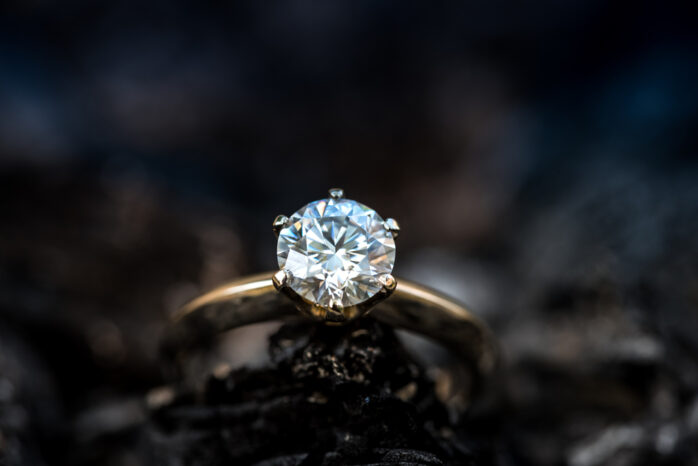
When choosing lab-created loose diamonds, it is significant to select a ring setting. These can range from solitaire to three-stone designs to halo. You can look at a view of different styles before choosing one. If you know the design your partner prefers, choosing the ring settings for the lab-grown diamonds becomes easier. For a lab-created center diamond, the surrounding accent stones can be the same.
A Comparison between Lab-Grown Diamonds and Naturally Occurring Diamonds
Above is a Lab Grown F VS! 1.04 carat
Above is an earth grown diamond (All natural)
If you take two samples of faceted crystallized carbon, both appear to be crystal clear and exude a kaleidoscopic spectrum of colors when held in any direct light. Though both appear to be the same, they are vastly different. While one was formed in the Earth’s crust several hundred years ago, the other was created in a laboratory. The point of similarity is that both have the same physical, chemical, and optical properties. Although diamonds are pure carbon, naturally-occurring diamonds also have other substances, such as nitrogen. It is the presence of these substances that makes the diamonds slightly yellowish. These diamonds came into the business a few years ago and have minute differences from naturally occurring diamonds. These are hard to spot and can only be identified by trained gemologists. A lab-grown loose diamond in Diamonds-usa.com is bought with a certification stating that it was created in a lab.
Why Choose Lab-Grown Diamonds?
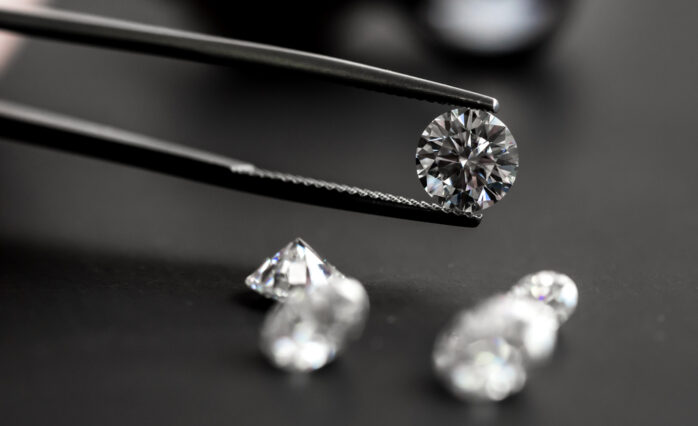
Lab-grown diamonds are just as beautiful as naturally occurring diamonds. If you pick an engagement ring that features these stones, it will be impossible to tell the difference. It looks as real as a mined diamond. One can get a bigger or a brighter-looking diamond if they opt for lab-grown diamonds. They are as much as 40% cheaper than diamonds than their naturally-occurring counterparts. But just because they are comparatively less expensive doesn’t mean that they are any less in terms of quality.
Also, these are ethically created. Mined diamonds have had a rather disturbing history and also harm the environment. Since the lab-grown diamonds are created in a controlled environment, the ethical issues plaguing the mining of diamonds are absent.
Diamonds made in a lab are as real as naturally-occurring diamonds because they have the same physical, chemical, and optical properties having been made in a controlled environment with the same kind of pressure and temperature.
A lab-grown diamond looks just like a mined diamond. Since optically and chemically the same, it is difficult to distinguish between the two. The only difference is that the ones grown in the labs have a microscopic inscription. But with specialized equipment, it is possible to read the inscription on the diamond.
Lab-grown diamonds are stylish and unique and offer a host of design options. These diamonds are available in diverse shapes and settings. One can opt for cushion, round, princess, or oval cut loose grown diamonds. Lab-grown diamonds can be easily set in any of the available settings, thus giving one a wide range of options to choose from.
Certification
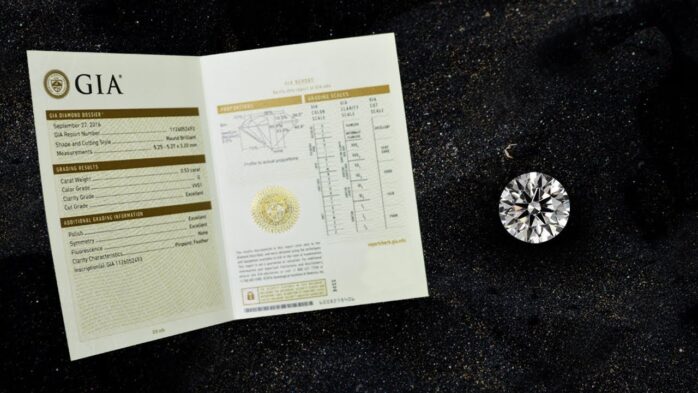
Certification is necessary for a lab diamond. Certificates get issued by an objective third-party lab that assesses the characteristics of the diamond and evaluates it based on the 4Cs of carat, clarity, cuts, and color. The gemologists or experts in the lab examine the diamonds with a loupe or a microscope to certify. Though some jewelers may provide uncertified diamonds at a lower cost, these cannot be trusted. It is thus advisable to refrain from purchasing such diamonds.
What are Sustainably Rated Lab Diamonds?
These are diamonds that comply with the standards of environmental and ethical responsibility. It is a responsible choice for many who are conscious of the impact of their actions on the environment.
Some Frequently Asked Questions
Is the cost of lab-created diamonds less than mined diamonds?
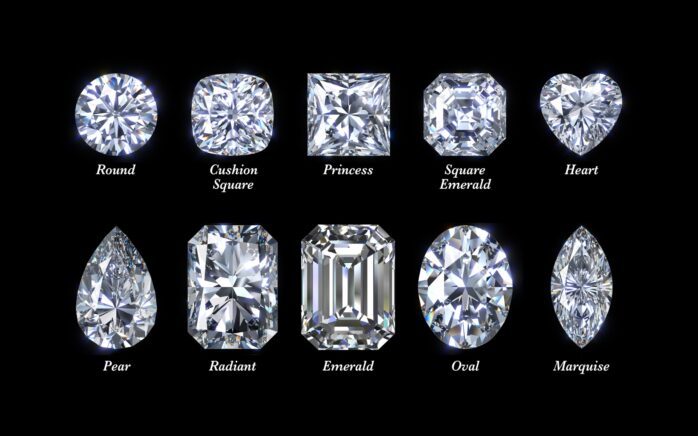
Lab-created diamonds are value purchases and are relatively less costly than natural or mined diamonds.
Are Lab Diamonds the Same as Naturally Occurring Diamonds?
Lab-created diamonds have the same chemical, optical and physical attributes as mined diamonds. They also have the same kind of sparkle and fire. It is hard to differentiate between the two and done through specialized equipment.
Chemical Vapor Deposition (CVD) machines at IIA Technologies Source: IIA Technologies
Do Lab Created Diamonds Have Flaws?
Each lab-created diamond is unique in color, cut, and clarity. Some of these diamonds may have some surface inclusions. These diamonds are graded by certified labs using stricter certification methods.
Do Lab Created Diamonds Become Cloudy?
These are chemically and physically similar to naturally-occurring diamonds and therefore do not have low durability. The chances of them becoming cloudy are minimal.
Are These Good Investments?
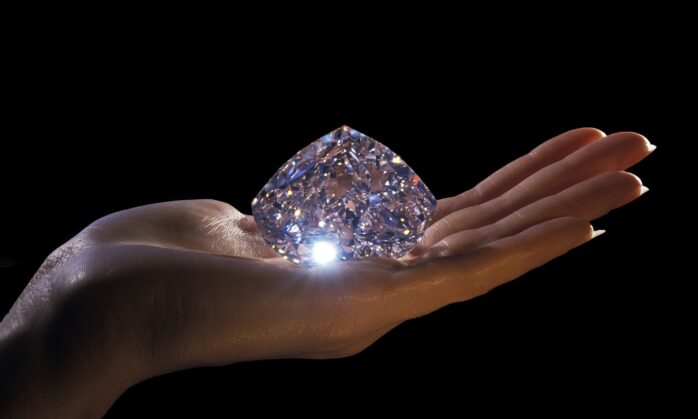
Though they offer great value to price, it is far more affordable than some other gemstones. Their value can change with time. Since these diamonds have not been around for long, there is still not enough clarity on their pricing in the future.
Can These Diamonds Be Covered Under Insurance?
Yes.
Can Lab Created Diamonds Test as Moissanite?
Given that they have similar thermal conductivity, some diamond testers may mistakenly identify them as moissanite. However, experienced professionals can gauge the differences between the two. While Moissanites are double refractive, diamonds are singly refractive.
What is meant by treated lab diamond?
Some lab diamonds are treated under a higher temperature and pressure similar to the naturally-occurring diamonds. But it’s not the same for all diamonds. While some certifications mention the treatment, others do not.
The post Lab Grown Loose Diamonds- What Are They appeared first on FotoLog.
from FotoLog https://ift.tt/JMdtYLP
via IFTTT


0 Comments